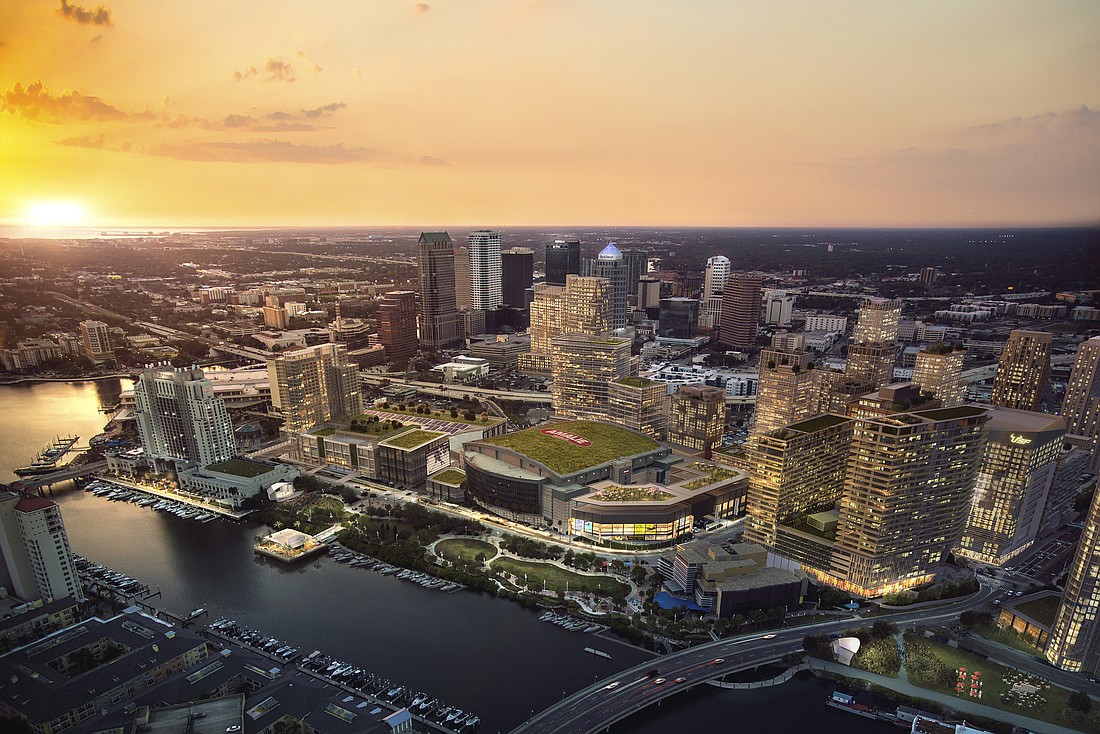- November 24, 2024
-
-
Loading

Loading

Cushman & Wakefield Executive Director Bruce Erhardt’s most recent quarterly report, published in July and covering the Tampa area, contains some bullish thoughts on the state of the market.
On the land cycle runway: “I’m still predicting the overall Tampa Bay land cycle has five to six years left, with solid growth for the next three years...The only headwind is construction costs are rising faster than rents. Even if there is a recession in 2020 it won’t affect the Tampa market, especially residential. The ‘dot com’ recession in 2001 did not have an effect on the land market in the Tampa Bay area.”
On labor, commodities pressure: “Record high lumber prices have added nearly $9,000 to the price of a single-family home since January 2017. Add to this a labor shortage and the homebuilders cannot meet demand.”
On population influx: “Florida had 1,600,000 new residents in the past 5 years and is expected to have 2,200,000 new residents in the next 5 years. Fort Myers had the largest percentage growth of 3.6% and Orlando had the largest increase in population at 75,400. Tampa Bay grew 60,700, a 1.8% change.”
On job growth topping the national average: “According to the Bureau of Labor Statistics, job growth in the Tampa-St. Petersburg-Clearwater FL Metro Area was 2.3% in May 2018, reflecting 30,400 jobs added during a 12-month period. The metro job growth figure was above the national number of 1.6%.”
800,000
Amount of new office space, as measured in square feet, that developers are poised to begin working on in the Tampa Bay area that “could start tomorrow,” Erhardt says.
$13,000,000,000
Amount of money that will be spent on new construction and renovation in the Tampa Bay area throughout 2022, according to a forecast by Dodge Data and Analytics, as cited in a New York Times story in April.
17
Number of new buildings that will comprise Water Street Tampa, the $3 billion, mixed-use development from Strategic Property Partners, a joint venture between Tampa Bay Lightning Jeff Vinik and Cascade Investment LLC. In all, the project will contain 3,500 new residences and nine million square feet of space.
13
The level, on a scale of property type cycle locations from Mueller, of Tampa’s apartment market. Level 13 indicates a “hyper supply phase of rent growth, positive but declining.” Tampa’s level is shared by Nashville, Miami, Atlanta and Palm Beach.
3.4%
Annual growth rate of apartment rents in the Tampa Bay area, based on measurement from the final quarter of 2017 to the end of the first three months of this year. Annual effective rent growth is forecast to be 2.9% next year and average 2.6% from 2020 through 2022, according to AxioMetrics Inc. The national average, by comparison, is 2.5%.
4,737
Number of new apartments scheduled for delivery in the Tampa area this year, of which 1,029 had been delivered as of June 24, according to AxioMetrics. In 2017, by comparison, a total of 4,521 new units had been delivered.
$1.75
Effective rent rate, on a per square foot basis, for the new apartments delivered in the Tampa area over the past 12 months. By comparison, existing multifamily rental units achieved an effective rent of $1.22 per square foot in the first quarter of this year in the region.
$60,568,268
Amount of revenue hotels in Tampa and Hillsborough County brought in during the first five months of 2018, according to Visit Tampa Bay, the area’s tourism marketing agency. The revenue amounted to an average daily rate of $122.77 per room. During the January to May period, hotels in the county achieved an average occupancy of 71.5%.
8.3%
Vacancy rate for Class A office buildings in Tampa’s central business district at the end of the second quarter. A year ago, vacancy stood at 10%. Class A buildings’ vacancy rate in the Westshore Business District as of June 30 was 9.2%, vs. 8.7% the same time last year.
4.5%
Overall vacancy for industrial space at the close of the second quarter in Lakeland, generally considered the heart of the I-4 Corridor between Tampa and Orlando, an area that can reach nearly 20 million consumers within a 24-hour drive. By comparison, East Tampa during the same period had a 6.5% overall vacancy, while West Tampa’s stood at 5%.